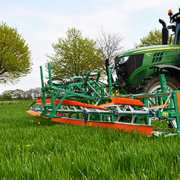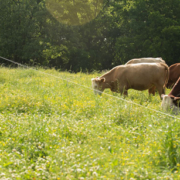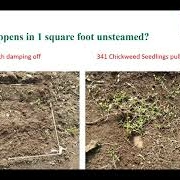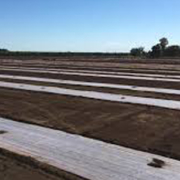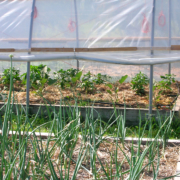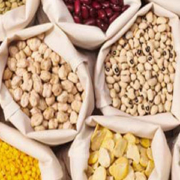Combcutting: An Innovative Approach for Reducing Broadleaf Weeds in Small Grains
 Print This Post
Print This Post
By Justin Morris, Regenerative Livestock Specialist
If you’re an ag producer, you know how challenging it can be to manage weeds. Faced with this same age-old challenge, Swedish organic farmer Jonas Carlsson began looking for ways to reduce weed infestations in his crops, especially thistles in spring wheat. Noticing that broadleaf weeds had a stiffer and thicker stem while the crop was soft and vegetative, Jonas started thinking about how he could use those differences to his advantage. He came up with a unique solution: A giant comb with stationary knives, in a technique called combcutting, that can selectively cut off or severely damage broadleaf weeds in the understory of a small grain crop without harming the crop or disturbing the soil.

Combcutting implements are available in working widths ranging from 20 to 30 feet. The implements are hydraulically powered and can be mounted on the front or back of a 60-horsepower tractor. Photo courtesy of Lyckegård Group AB
How Does Combcutting Work?
When a small grain crop like wheat, oat, barley, or rye is in the vegetative growth stage and prior to stem development, the crop’s leaves are very flexible. Broadleaf weeds like Canada Thistle growing within the vegetative cash crop generally have a stem, which continues to get thicker and stiffer as the weed matures. Combcutting technology uses a series of stationary knives that are set at a specific angle and distance from each other. As the implement is lowered into the plant canopy and the tractor drives forward at a speed between 6 and 9 mph, the knives comb through the cash crop understory, allowing the crop leaves to pass between the knives unharmed, whereas the stem of the weed is cut off or severely damaged. Cutting off the weed in the understory doesn’t kill the weed like an herbicide, but it does put the weed at a competitive disadvantage against a taller cash crop and reduces future weed seed production.
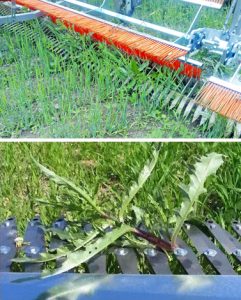
Closeup views of stationary knives that allow the crop to flow through freely while cutting off or severely damaging broadleaf weeds. Photos courtesy of Lyckegård Group AB.
To prevent buildup of weeds on the knives, a rotating brush constantly clears the knives so they can continue cutting weeds. To be the most effective, there must be a physical difference between the crop and the weed – timing is the most important factor. The weed must be stiffer, thicker, have a different branching pattern or be higher than the crop.
After the cash crop has matured beyond the vegetative stage, combcutting can no longer be used within the crop canopy. But it can be used to cut weeds above the mature cash crop to reduce the weed seed population. This has been done with lentils to further reduce weed seeds of thistle, wild oat and wild mustard. Common weeds that can be clipped combcutting include:
- Wild mustard
- Pigweed
- Lambsquarters
- Thistle
You can watch how this technology works here.
Advantages of Combcutting and Supplementary Strategies
For organic growers, combcutting can reduce weed competition and plant stress for a small grain crop without using tillage for weed control which also brings up more weed seeds. For non-organic growers, this technology can greatly reduce or eliminate herbicidal applications. This can: 1) reduce costs overall when compared to the expense of herbicide applications; 2) work around herbicide-resistant weeds; and 3) facilitate market access for a crop that hasn’t had herbicides applied to it. Many large food-processing companies are wanting to appear more sustainable and environmentally conscious to consumers by sourcing ingredients from farmers using less chemicals.
Combcutting isn’t the whole solution for reducing weeds in a small grain crop. Rather, this technology should be used in combination with other good soil health management practices, such as:
- Proper seeding rate
- Diverse crop rotation with as many crop types as possible to feed soil life and break pest cycles
- Diverse cover crop mixes comprised of several plant families and functional groups to provide continuous living roots and appropriate soil cover outside the cash crop growing period
- Minimal soil disturbance through reduced tillage or no-till
- Integration of livestock on cropland with proper grazing management of diverse cover crop mixes where possible
For more information on combcutting equipment, visit the Lyckegård Group AB website.
This blog is produced by the National Center for Appropriate Technology through the ATTRA Sustainable Agriculture program, under a cooperative agreement with USDA Rural Development. ATTRA.NCAT.ORG.

